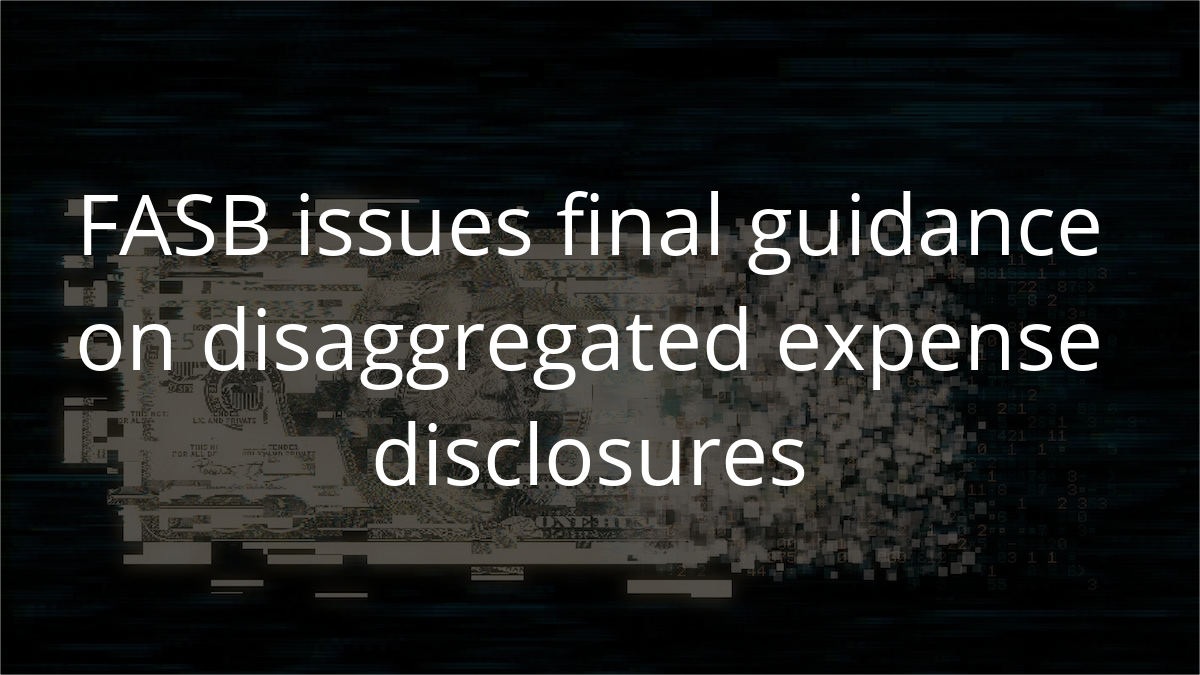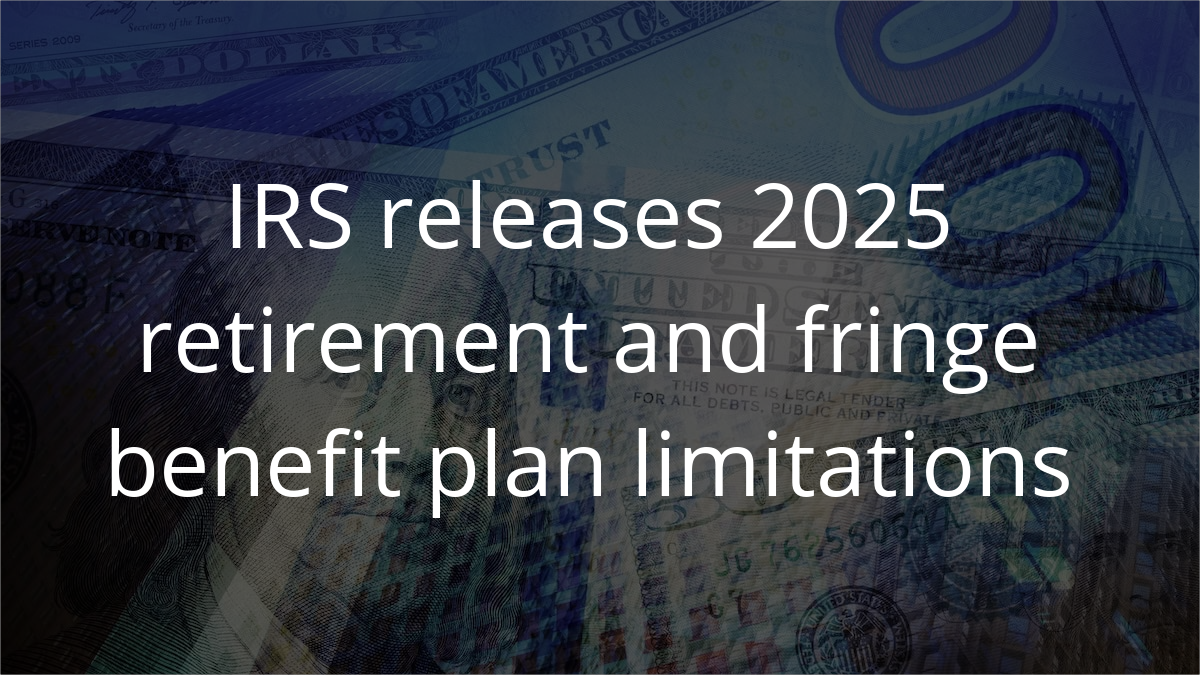ARTICLE | March 02, 2022
As previously communicated, Statement on Auditing Standards (SAS) 136, Forming an Opinion and Reporting on Financial Statements of Employee Benefit Plans Subject to ERISA, will bring significant changes for employee benefit plans subject to the Employee Retirement Income Security Act of 1974 (ERISA) and their auditors effective for audits of periods ending on or after December 15, 2021. There are generally two types of ERISA plan audits – (a) an ERISA plan audit performed pursuant to Section 103(a)(3)(C) and (b) an ERISA plan audit other than an ERISA Section 103(a)(3)(C) audit.
In an ERISA Section 103(a)(3)(C) audit, the audit does not extend to the plan’s investment information that has been certified by a qualified institution. However, certain procedures are performed over the investment information covered by the certification as required by SAS 136. In addition, financial statement information, including disclosures, not covered by the certification, as well as information unrelated to investments, including amounts received or disbursed by the plan, are subject to audit regardless of whether such information is included in the certified statement, in the same manner as for an ERISA plan audit that is not pursuant to ERISA Section 103(a)(3)(C).
An ERISA Section 103(a)(3)(C) audit may be elected by management only when a qualified institution certifies both the accuracy and completeness of the investment information. It is important that plan administrators consider all of the implications of making an ERISA Section 103(a)(3)(C) election before the election is made and before engaging an auditor.
What are the plan administrator’s additional responsibilities when electing an ERISA Section 103(a)(3)(C) audit?
The plan administrator must determine whether an ERISA Section 103(a)(3)(C) audit is permissible in the circumstances, the investment information is prepared and certified by a qualified institution as described in 29 CFR 2520.103-8, the certification meets the requirements in 29 CFR 2520.103-5, and the certified investment information is appropriately measured, presented and disclosed in accordance with the applicable financial reporting framework. It is advisable for the plan administrator to keep a record of the process used to determine the election is permissible, as well as a copy of the certification and any contracts or documentation to support the election. If the plan administrator is unable to establish these preconditions exist, an ERISA section 103(a)(3)(C) audit cannot be elected and the auditor would not have the basis for accepting nor performing such an engagement.
This election does not eliminate the plan administrator’s responsibility for determining whether the plan’s financial statements and disclosures are prepared in accordance with the applicable financial reporting framework and in conformity with the DOL Rules and Regulations for Reporting and Disclosure under ERISA. Further, the plan administrator is still responsible for maintaining a current plan instrument, including all plan amendments; administering the plan; and determining that the plan’s transactions presented and disclosed in the financial statements are in conformity with the plan’s provisions, including maintaining sufficient records with respect to each of the participants, to determine the benefits due or which may become due to such participants.
Who can issue a certification of investment information to a plan?
Not every institution is qualified to issue a certification, so not every plan can elect to have an ERISA Section 103(a)(3)(C) audit. The type of entity that can issue a certification is a bank or similar institution (such as a trust company), or insurance carrier. A key to whether an entity can issue a certification is whether they are reviewed by federal or state regulators. Some types of entities that hold a plan’s assets, such as broker/dealers and mutual fund companies, are not qualified to issue a certification.
In some cases, it may be difficult to determine whether the certification comes from a financial service provider that is a qualified institution. For example:
- A qualified institution may not be able to issue a certification if they are not engaged to serve as the plan’s trustee or custodian.
- A certification may be issued by the brokerage arm of a qualified institution, the plan’s recordkeeper or payroll provider, on behalf of the plan’s qualified institution as “agent for,” and management would need to determine whether there is a contractual arrangement between a qualified institution and the entity such that the entity is able to provide the certification on the qualified institution’s behalf.
If it is questionable whether an entity is qualified, the plan administrator may contact a representative of the entity certifying and ask if they are qualified to issue the certification and how they are qualified. The plan administrator may also review service agreements or other contracts to determine whether an entity is qualified to issue a certification.
If the U.S. Department of Labor (DOL) determines the certifying entity isn’t qualified, it can reject the ERISA Section 103(a)(3)(C) election and require the certified investment information to be subjected to audit. In this situation, the plan administrator would need to arrange for an ERISA plan audit that is not pursuant to ERISA Section 103(a)(3)(C) and would need to pay any penalties the government may assess.
What are potential challenges for plan administrators in determining whether investment information is certified?
It is important to understand how certified investments are being measured and reported in order to determine whether any adjustments are required so that the plan’s financial statements and disclosures are prepared in accordance with the applicable financial reporting framework and in conformity with the DOL Rules and Regulations for Reporting and Disclosure under ERISA.
For example, a plan’s limited partnership interests and private company stock investments are required to be reported at their current fair value like all other investments. The entity certifying the investments may instead be reporting such hard-to-value investments at the original amount paid or the same amount as a prior year. In this situation, the certification relied on by the plan and its auditors in the performance of an ERISA Section 103(a)(3)(C) audit could be inappropriate.
Do you have questions or want to talk?
Call us at (800) 232-9547 or fill out the form below and we’ll contact you to discuss your specific situation.
This article was written by RSM US LLP and originally appeared on Mar 02, 2022.
2022 RSM US LLP. All rights reserved.
https://rsmus.com/insights/financial-reporting/sas-136-the-erisa-section-103-a-3-c-audit-election.html
RSM US Alliance provides its members with access to resources of RSM US LLP. RSM US Alliance member firms are separate and independent businesses and legal entities that are responsible for their own acts and omissions, and each are separate and independent from RSM US LLP. RSM US LLP is the U.S. member firm of RSM International, a global network of independent audit, tax, and consulting firms. Members of RSM US Alliance have access to RSM International resources through RSM US LLP but are not member firms of RSM International. Visit rsmus.com/aboutus for more information regarding RSM US LLP and RSM International. The RSM(tm) brandmark is used under license by RSM US LLP. RSM US Alliance products and services are proprietary to RSM US LLP.

Insero & Co. CPAs, LLP is a proud member of RSM US Alliance, a premier affiliation of independent accounting and consulting firms in the United States. RSM US Alliance provides our firm with access to resources of RSM US LLP, the leading provider of audit, tax and consulting services focused on the middle market. RSM US LLP is a licensed CPA firm and the U.S. member of RSM International, a global network of independent audit, tax and consulting firms with more than 43,000 people in over 120 countries.
Our membership in RSM US Alliance has elevated our capabilities in the marketplace, helping to differentiate our firm from the competition while allowing us to maintain our independence and entrepreneurial culture. We have access to a valuable peer network of like-sized firms as well as a broad range of tools, expertise, and technical resources.
For more information on how Insero & Co. CPAs can assist you, please call (800) 232-9547.




